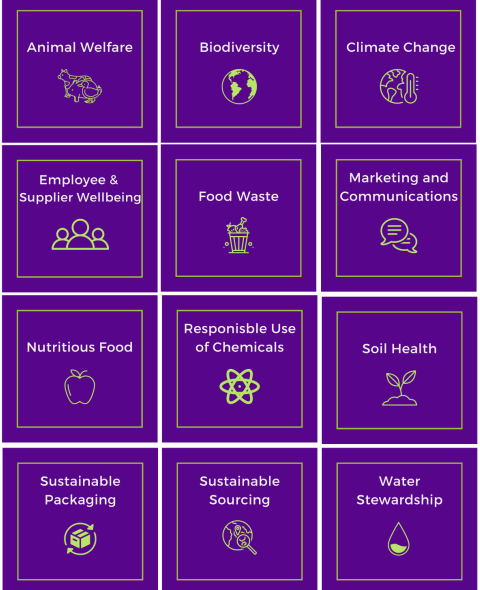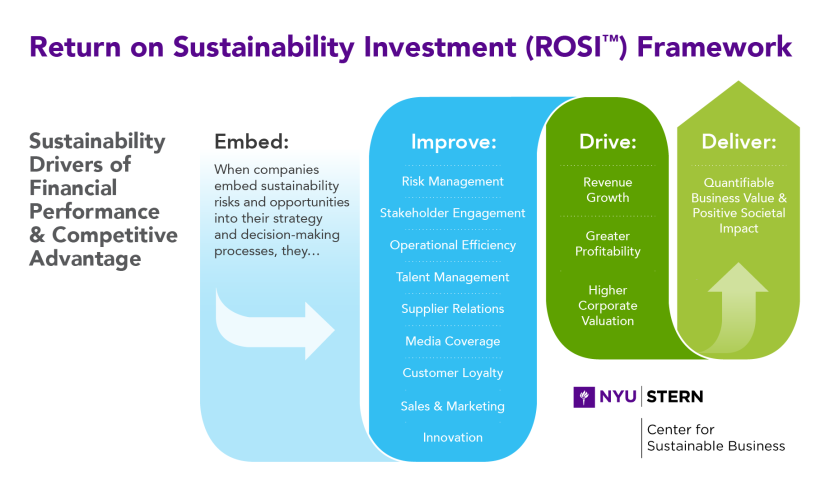Healthcare accounts for 4.5% of greenhouse gas (GHG) emissions globally, and 8.5% of US emissions. Healthcare emissions are also growing, and could reach six gigatons per year by 2050 if no action is taken. Climate change affects both our need for healthcare and our ability to have consistent access to healthcare.
Leveraging the unique Return on Sustainability Investment (ROSI™) methodology developed by NYU Stern CSB, The Healthcare Delivery Systems Decarbonization Framework identifies 8 decarbonization strategies that healthcare delivery systems can use to make the internal business case for implementing decarbonization practices, develop more resilient organizations and drive financial value.
Healthcare systems practitioners can use the framework to:
- Understand which decarbonization options fit with their budget and decarbonization journey
- Understand how to calculate the tangible and intangible value associated with the implementation of each sub-practice, including which costs to anticipate
- Make the internal business case for decarbonization to secure resources
Key Takeaways:
- If you haven’t started decarbonization yet, there is an entry point for every budget, and the Framework can help you make the business case for starting
- With an appropriate choice of projects to implement, immediate savings could be realized that can be reinvested into the additional energy efficiency measures, creating a revolving fund for new decarbonization projects
- The Inflation Reduction Act (IRA) has decarbonization assistance for both nonprofit and for profit hospitals. Benefits are highest in the early years of the IRA.
Strategies and Critical Enablers: based on research, experience, and engagement with industry leaders, researchers identified the following decarbonization strategies and enablers that are being used by the industry
Strategies: The eight strategies impact healthcare delivery systems' Scope 1, 2, and some influenceable Scope 3 emissions and are described below:
- Energy Management: Implement practices that reduce energy required and switch to renewable energy sources
- Building Design & Maintenance: Design and build hospitals and clinics that require less energy, incorporate renewable energy sources, and enhance resilience to extreme weather
- Sustainable Sourcing: Utilize sourcing practices that minimize waste and toxic chemicals, incorporate circularity, and reward suppliers that help achieve decarbonization goals
- Food Service Optimization: Implement practices that procure foods from local sources, produce less waste, and incorporate plant-based options
- Low Emissions Clinical Care: Use clinical care solutions that minimize the carbon footprint of anesthetic gases and patient travel
- Waste Reduction: Produce less waste through circularity, proper sorting of waste, and using waste for energy production
- Responsible Investments: Prioritize investments focused on sustainability and with portfolios of companies that show progress towards carbon reduction goals
- Reduced Transportation: Implement practices that optimize and decarbonize hospital-related transportation
Critical Enablers: A combination of committed leadership, adequate funding allocation, and investment in education can create the right enabling environment, that is ultimately critical to speed the adoption of decarbonization practices and ensure they are maintained over time.
The Return on Sustainability Investment (ROSI™) Framework was used to determine the tangible and intangible benefits associated with the practices that were identified.






